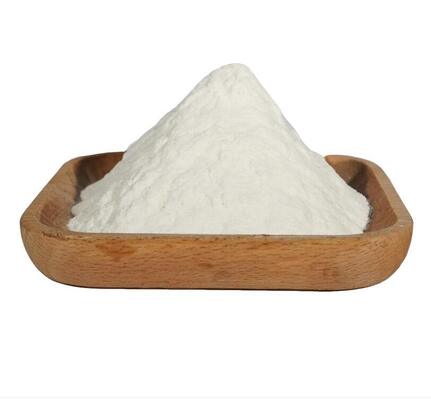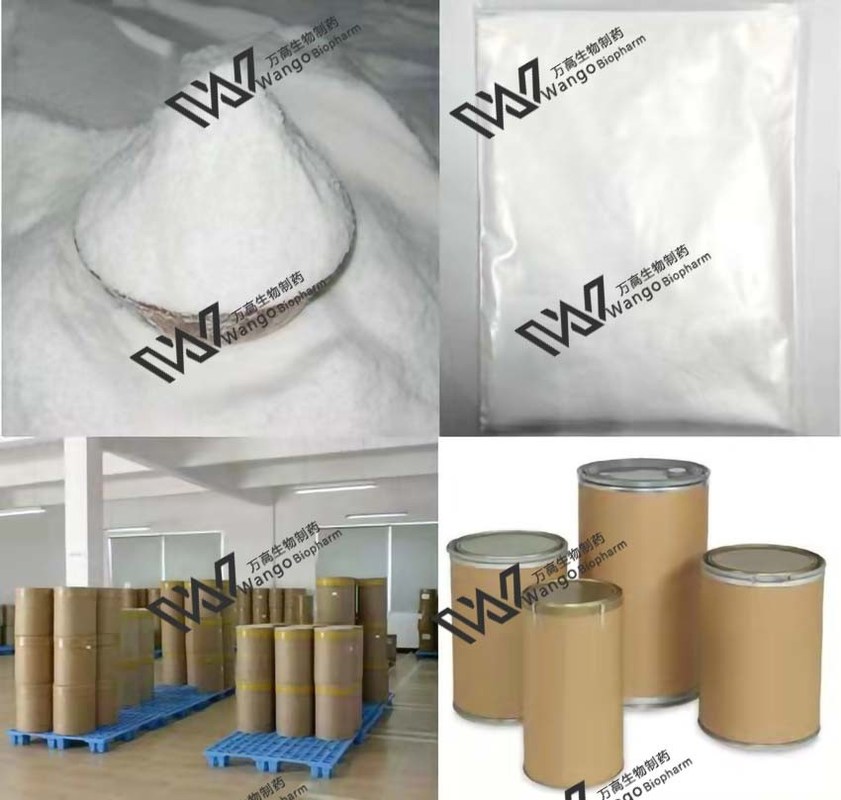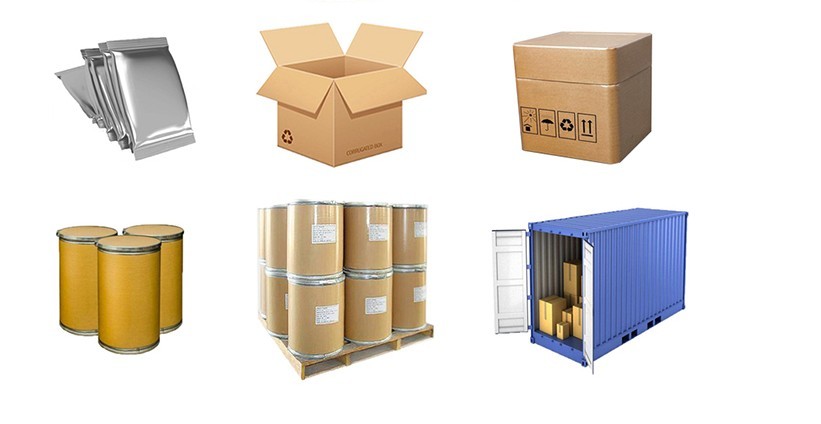Product Description
methylammonium iodide Basic information Specifications Applications Product Name: methylammonium iodide Synonyms: MAI;LT-S9126;methylammonium iodide;Methylamine·hydriodic acid;CH3NH3I (MAI);MethylazaniuM;Methanamine hydriodide;Methylamine Hydroiodide CAS: 14965-49-2 MF: CH6IN MW: 158.96951 EINECS: 239-037-4 Product Categories: OLED Mol File: 14965-49-2.mol methylammonium iodide Chemical Properties Melting point 270-280°C Fp 12℃ storage temp. Hygroscopic, Refrigerator, under inert atmosphere solubility Methanol (Slightly), Water form powder color White to Off-White InChI InChI=1S/CH5N.HI/c1-2;/h2H2,1H3;1H InChIKey LLWRXQXPJMPHLR-UHFFFAOYSA-N SMILES [NH3+]C.[I-] Safety Information Hazard Codes Xn Risk Statements 22-36/37/38 Safety Statements 26-36/37/39-46-24/25 RIDADR UN1219 - class 3 - PG 2 - Isopropanol WGK Germany 3 HS Code 29211100 MSDS Information methylammonium iodide Usage And Synthesis Specifications Chemical formula CH6IN Synonyms Methylamine hydroiodide CAS No. 14965-49-2 Chemical name Methylammonium iodide Physical appearance White, crystalline solid Purification method Recrystallisation (ethanol) Purity >99.9% (as measured by elemental analysis) Molecular weight 158.97 g/mol Recommended solvents for perovskite synthesis DMF, DMSO Applications Methylammonium iodide (MAI), also referred to as methylamine hydroiodide, is a precursor for the synthesis of organic-inorganic hybrid perovskites for use in FETs, LEDs and PVs. Due to the high purity of the methylammonium iodide (99.99%), it should be noted that its solubility is reduced within dimethyl formamide and dimethyl sulfoxide. This reduced solubility is due to the removal of trace amounts of residual hydroiodic acid (HI) used during the synthesis and purification of the material. This can potentially have an impact upon the performance of solar cells leading to a reduction in maximum power conversion efficiency achievable. Adding fixed concentrations of hydroiodic acid to perovskite solutions can allow for the improvement of device metrics. Using high-purity precursor materials allows for accurate addition of amounts of hydroiodic acid giving higher reproducibility to experiments. It is recommended that between 1% and 10% hydroiodic acid is used with high-purity methylammonium iodide to achieve optimal device performance. The amount required depends on the precursors used, solution concentration, solvent used, and processing environment. Therefore, this will need to be adjusted for each individual laboratory and process. Application For simpler ink fabrication, it is recommended that the lower-purity methylammonium iodide (>98%) is used. Description Methylammonium iodide (MAI), also referred to as methylamine hydroiodide,?is a precursor for the synthesis of organic-inorganic hybrid perovskites for use in FETs, LEDs and PVs. Uses Methylammonium iodide can be used as a precursor in combination with lead iodide to change the morphology of the resulting perovskite materials. Perovskite materials can further be utilized in the fabrication of alternative energy devices such as light emitting diodes (LEDs), and perovskite solar cells (PSCs). Uses Organohalide based perovskites have emerged as an important class of material for solar cell applications. Our perovskites precursors with extremely low water contents are useful for synthesizing mixed cation or anion perovskites needed for the optimization of the band gap, carrier diffusion length and power conversion efficiency of perovskites based solar cells. Uses The iodide and bromide based alkylated halides find applications as precursors for fabrication of perovskites for photovoltaic applications. methylammonium iodide Preparation Products And Raw materials Raw materials Hydriodic acid Preparation Products Perovskite CH3NH3PbI3 Powdermethylammonium iodide Basic information Specifications Applications Product Name: methylammonium iodide Synonyms: MAI;LT-S9126;methylammonium iodide;Methylamine·hydriodic acid;CH3NH3I (MAI);MethylazaniuM;Methanamine hydriodide;Methylamine Hydroiodide CAS: 14965-49-2 MF: CH6IN MW: 158.96951 EINECS: 239-037-4 Product Categories: OLED Mol File: 14965-49-2.mol methylammonium iodide Chemical Properties Melting point 270-280°C Fp 12℃ storage temp. Hygroscopic, Refrigerator, under inert atmosphere solubility Methanol (Slightly), Water form powder color White to Off-White InChI InChI=1S/CH5N.HI/c1-2;/h2H2,1H3;1H InChIKey LLWRXQXPJMPHLR-UHFFFAOYSA-N SMILES [NH3+]C.[I-] Safety Information Hazard Codes Xn Risk Statements 22-36/37/38 Safety Statements 26-36/37/39-46-24/25 RIDADR UN1219 - class 3 - PG 2 - Isopropanol WGK Germany 3 HS Code 29211100 MSDS Information methylammonium iodide Usage And Synthesis Specifications Chemical formula CH6IN Synonyms Methylamine hydroiodide CAS No. 14965-49-2 Chemical name Methylammonium iodide Physical appearance White, crystalline solid Purification method Recrystallisation (ethanol) Purity >99.9% (as measured by elemental analysis) Molecular weight 158.97 g/mol Recommended solvents for perovskite synthesis DMF, DMSO Applications Methylammonium iodide (MAI), also referred to as methylamine hydroiodide, is a precursor for the synthesis of organic-inorganic hybrid perovskites for use in FETs, LEDs and PVs. Due to the high purity of the methylammonium iodide (99.99%), it should be noted that its solubility is reduced within dimethyl formamide and dimethyl sulfoxide. This reduced solubility is due to the removal of trace amounts of residual hydroiodic acid (HI) used during the synthesis and purification of the material. This can potentially have an impact upon the performance of solar cells leading to a reduction in maximum power conversion efficiency achievable. Adding fixed concentrations of hydroiodic acid to perovskite solutions can allow for the improvement of device metrics. Using high-purity precursor materials allows for accurate addition of amounts of hydroiodic acid giving higher reproducibility to experiments. It is recommended that between 1% and 10% hydroiodic acid is used with high-purity methylammonium iodide to achieve optimal device performance. The amount required depends on the precursors used, solution concentration, solvent used, and processing environment. Therefore, this will need to be adjusted for each individual laboratory and process. Application For simpler ink fabrication, it is recommended that the lower-purity methylammonium iodide (>98%) is used. Description Methylammonium iodide (MAI), also referred to as methylamine hydroiodide,?is a precursor for the synthesis of organic-inorganic hybrid perovskites for use in FETs, LEDs and PVs. Uses Methylammonium iodide can be used as a precursor in combination with lead iodide to change the morphology of the resulting perovskite materials. Perovskite materials can further be utilized in the fabrication of alternative energy devices such as light emitting diodes (LEDs), and perovskite solar cells (PSCs). Uses Organohalide based perovskites have emerged as an important class of material for solar cell applications. Our perovskites precursors with extremely low water contents are useful for synthesizing mixed cation or anion perovskites needed for the optimization of the band gap, carrier diffusion length and power conversion efficiency of perovskites based solar cells. Uses The iodide and bromide based alkylated halides find applications as precursors for fabrication of perovskites for photovoltaic applications. methylammonium iodide Preparation Products And Raw materials Raw materials Hydriodic acid Preparation Products Perovskite CH3NH3PbI3 Powdermethylammonium iodide Usage And Synthesis Specifications Chemical formula CH6IN Synonyms Methylamine hydroiodide CAS No. 14965-49-2 Chemical name Methylammonium iodide Physical appearance White, crystalline solid Purification method Recrystallisation (ethanol) Purity >99.9% (as measured by elemental analysis) Molecular weight 158.97 g/mol Recommended solvents for perovskite synthesis DMF, DMSO
Lead(II) Bromide99.9 % Cas10031-22-8 perovskite material Electronic materials with low price
| Physical Properties |
White orthorhombic crystals; density 6.66 g/cm3; melts at 373°C; forms a horn-like mass on solidification; vaporizes at 916°C; decomposes slowly on exposure to light; sparingly soluble in cold water (4.55 g/L at 0°C and 8.44 g/L at 20°C, respectively); moderately soluble in boiling water (44.1g/L at 100°C); Ksp 6.60x10–6 at 25°C; insoluble in alcohol; slightly soluble in ammonia; soluble in alkalies and also in sodium or potassium bromide solutions. |
| Uses |
Lead(II) bromide is used for developing images in photography; as inorganic filler in fire-retardant plastics; as a photopolymerization catalyst for acrylamide monomer; and as a welding flux for welding aluminum or its alloys to other metals. |
| Preparation |
Lead bromide is prepared by treating an aqueous solution of lead nitrate with hydrobromic acid or with sodium or potassium bromide:
Pb2+ + 2Br¯ → PbBr2
The solution is allowed to stand to let the precipitate settle.
The compound also may be obtained by adding lead carbonate or lead monoxide to hydrobromic acid. |
| Toxicity |
Moderately toxic by ingestion. The toxic effects are those of lead. |
| Chemical Properties |
white, ortho-rhomb crystal(s); -80 mesh with 99.999% purity; enthalpy of vaporization 133 kJ/mol; enthalpy of fusion 16.44 kJ/mol; obtained from PbO or PbCO3 and HBr; finds use as a photopolymerization catalyst and in photoduplication processes in the 365 nm region [KIR78] [CER91] [CRC10] [MER06] |
| Physical properties |
White orthorhombic crystals; density 6.66 g/cm3; melts at 373°C; forms a horn-like mass on solidification; vaporizes at 916°C; decomposes slowly on exposure to light; sparingly soluble in cold water (4.55 g/L at 0°C and 8.44 g/L at 20°C, respectively); moderately soluble in boiling water (44.1g/L at 100°C); Ksp 6.60x10-6 at 25°C; insoluble in alcohol; slightly soluble in ammonia; soluble in alkalies and also in sodium or potassium bromide solutions. |
| Uses |
Lead bromide is used for developing images in photography; as inorganic filler in fire-retardant plastics; as a photopolymerization catalyst for acrylamide monomer; and as a welding flux for welding aluminum or its alloys to other metals. |
| Uses |
It is used in the field of antirust, pigment and photograph. The molten lead(II) bromide acts as an electrolyte. Lead(II) bromide provides a high concentration of lead(II) ions and bromide ions to carry the current during the electrolysis process. The rare-earth-doped alkali-lead bromide crystals (potassium lead bromide (or) KPB; rubidium lead bromide or RPB) emerge as promising new low-phonon-energy host materials for mid-IR applications and are useful for solid state lasers. Hybrid organic/lead halide perovskites are promising materials for solar cell fabrication. |
| Uses |
Lead(II) bromide (PbBr2) can be used in the fabrication of nanoscale quasi-2D layered perovskites, which are potentially utilized as light-emitting materials. It can also be used for the synthesis of deep blue fluorescent lead bromide perovskite microdisks. These microdisks can be used as direct bandgap semiconductors for light-emitting diodes (LEDs). |
| reaction suitability |
reagent type: catalyst
core: lead |
| Materials Uses |
Lead bromide is one of the most common precursors used in the preparation of perovskite-based opto-electronic systems, including light-emitting diodes (LEDs) and perovskite solar cells (PSCs). |
| Purification Methods |
Crystallise it from water containing a few drops of HBr (25mL of water per gram PbBr2) between 100o and 0o. A neutral solution is evaporated at 110o, and the crystals that separate are collected by rapid filtration at 70o and dried at 105o (to give the monohydrate). Its solubility in H2O is 0.5% (at ~10o) and 5% (at ~ 100o). To prepare the anhydrous bromide, the hydrate is heated for several hours at 170o and then in a Pt boat at 200o in a stream of HBr and H2. Finally it is fused [Clayton et al. J Chem Soc, Faraday Trans 1 76 2362 1980]. |

Product No.: LT-S9126 Product Name: MAI Chemical Name: Methylammonium iodide CAS No.: 14965-49-2 Grade: >99.5%, recrystallized 4 times Formula: CH6IN M.W.: 158.97 g/mole Availability: In Stock Reference: 1.Hysteresis-less inverted CH3NH3PbI3 planar perovskite hybrid solar cells with 18.1% power conversion efficiency, J. H. Heo et al., Energ. Environ. Sci., 8, 602-1608 (2015); DOI: 10.1039/C5EE00120J. 2.A [2,2]paracyclophane triarylamine-based hole-transporting material for high performance perovskite solar cells, S Park et al., J. Mater. Chem. A., 3, 24215-24220 (2015); DOI: 10.1039/C5TA08417B. 3.Enhanced optopelectronic quality of perovskite thin films with hydrophosphorous acid for planar heterojunction solar cells, W. Zhang et al., Nat. Commun., 6, 10030 (2015); doi:10.1038/ncomms10030.Methylammonium iodide>99.5% Cas14965-49-2 recrystallized 4 times Electronic materials with low price

 Your message must be between 20-3,000 characters!
Your message must be between 20-3,000 characters! Please check your E-mail!
Please check your E-mail!  Your message must be between 20-3,000 characters!
Your message must be between 20-3,000 characters! Please check your E-mail!
Please check your E-mail! 








